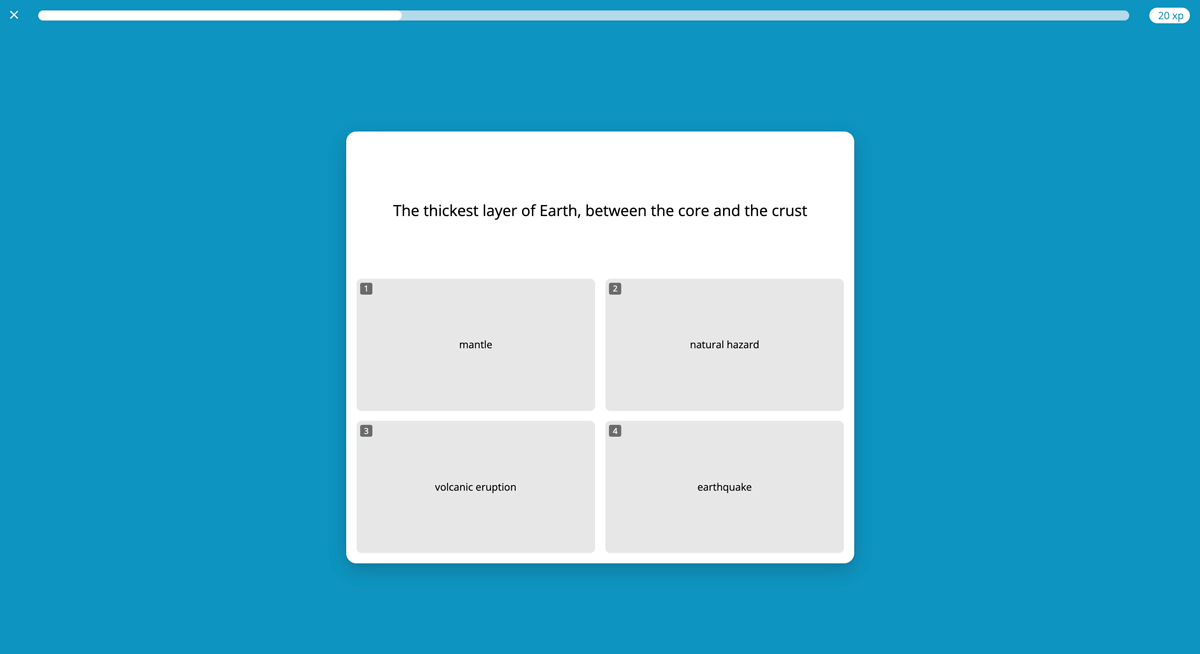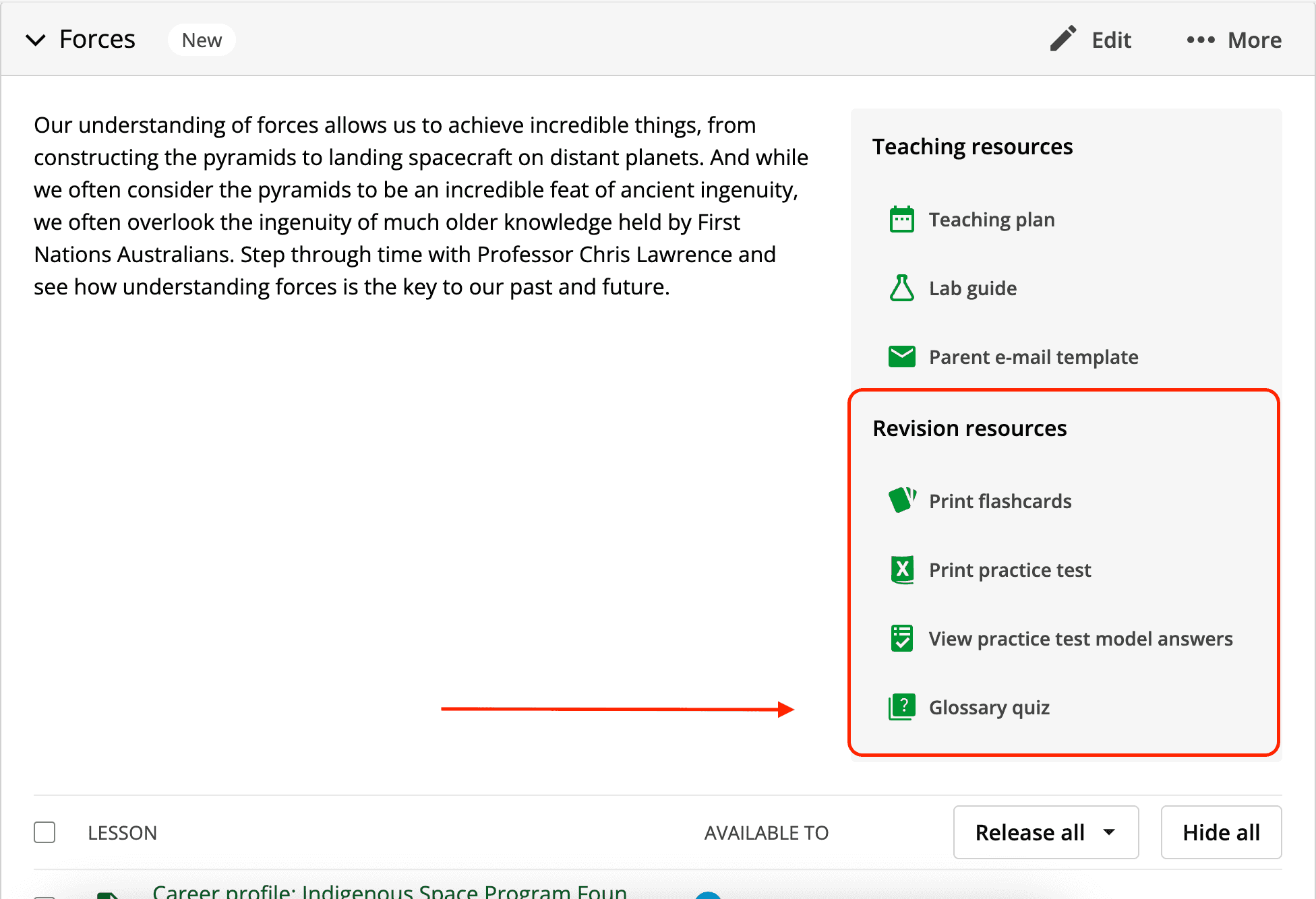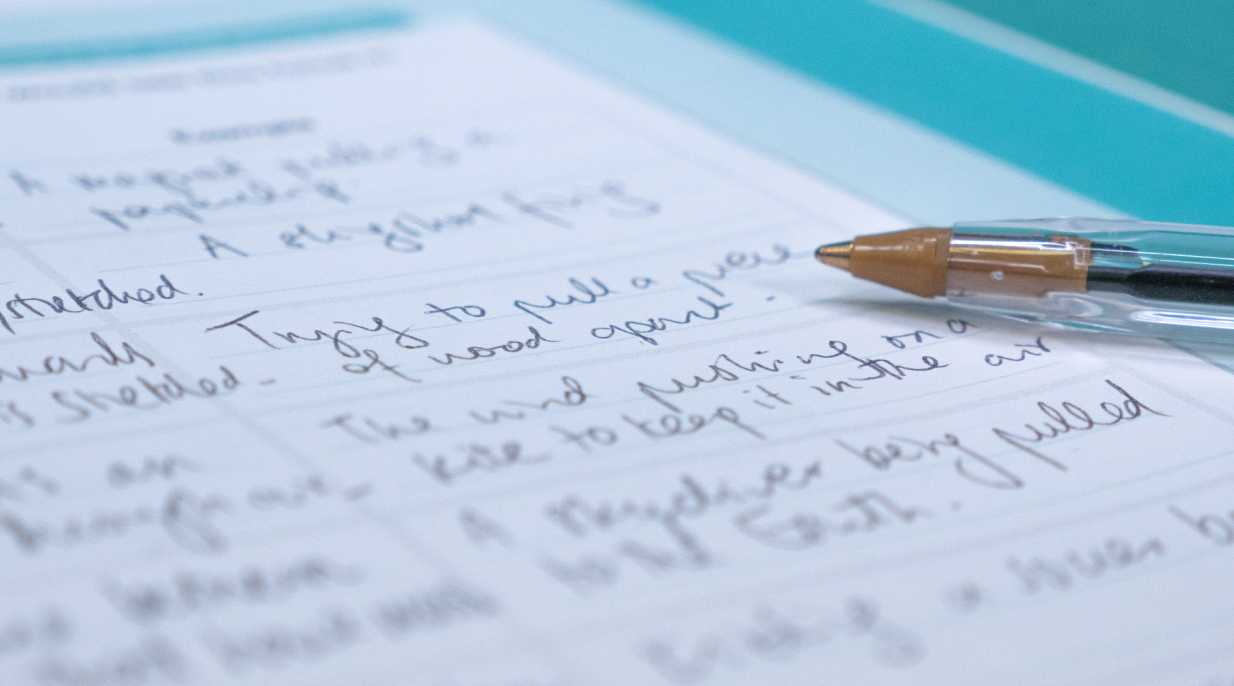New note-taking and study resources
Set your students up for success with scaffolded revision tools

Stile is always evolving. We’ve supercharged our science resources with new revision and note-taking materials to help your students consolidate and master coursework, develop intrinsic motivation, and track their progress.
For every classroom lesson in Stile, you now have access to carefully scaffolded resources that will build your students’ revision and note-taking skills, which become increasingly complex as they progress from Year 7 to Year 10. Read more about the progression of study skills.
What’s new?
Printable revision activities
Revision activities consolidate key concepts in each lesson with integrated learning goals and success criteria. The note-taking tips will support your students in creating their own revision notes while implementing effective study skills. As PDFs, you can project the worksheet to go through as a class or review the fully worked example responses.

Printable practice unit tests
Practice tests help students study for the real thing and check their understanding against learning goals, with model answers for teachers and students.

Printable flashcards
Using the evidence-based learning strategy of spaced repetition, printable flashcards will help students define keywords from each unit. You’ll also find flashcards, glossaries, and quizzes throughout the Stile X phone app, reinforcing key scientific terminology.

Glossary Quizzes
The most popular Stile X app feature is now available in Stile! Using evidence-based learning strategies like retrieval practice and spaced repetition, glossary quizzes encourage students to build their scientific literacy. When completing a level of the quiz, students encounter each glossary term multiple times to encourage mastery.

Video summaries
Over 200 60-second summary videos capture curriculum content for each core lesson to help students revise (think TikTok meets Khan Academy!).
How to find the resources?
In your subject
For each of your units, you will find a new section called Teaching resources which includes teaching plans, lab guides, and parent templates. Within this section, is a brand new section called Revision resources. Here you can find:
- Practice tests and model answers
- Printable flashcards
- Glossary quizzes

In a classroom lesson
All units in Stile include a variety of lesson types. Classroom lessons cover core curriculum requirements and now contain printable revision activities and example responses.
You can find them in two places:
- In the Revision resources section at the top of a lesson in Prepare Mode, so you can print them before class.
- In the Revision resources banner at the bottom of the lesson in Prepare and Teach Mode, so that you can project the example responses. Both teachers and students can access these resources along with the lesson summary video.


Backed by rigorous cognitive research
Read all about the science of Stile’s revision resources, the evidence-based learning strategies embedded into the design and contents.
Retrieval practice
Retrieval practice asks students to actively recall information frequently and in different forms to boost long-term retention and transfer of knowledge to new contexts.
Metacognition
Metacognition supports students in monitoring their own learning by encouraging them to evaluate their level of comprehension, task performance, and the efficacy of their study strategies.
Spaced repetition
Spaced repetition involves revisiting a concept multiple times over a time period to facilitate better understanding and recall.
Summarisation
Summarisation helps students identify key ideas and relevant details to improve memory and understanding of the concept.
Elaboration
Elaboration is all about adding details to knowledge, for instance connecting to prior knowledge or something personal, to help students deeply understand the concept and more easily remember it.
Dual coding
Dual coding involves presenting concepts in multiple ways e.g. verbal, visual and textual, to give students multiple pathways to remember, understand and access that knowledge.
Some things are better on paper
When taking notes, pen and paper are hard to beat. Research suggests that physical note-taking improves cognitive understanding, recall and grades. That’s why we’ve made these resources easy to access, download and print. Alongside our interactive digital lessons, students can create summary notes, practise their handwriting, and unwind with mindful colouring.

Complete physical booklets for each unit containing these revision activities and practice tests can also be purchased from the Stile Shop.
*Due to existing contracts with Victorian government schools, these revision resources are not available within Stile, but booklets can be purchased in Stile. For every purchased booklet, the associated revision activities will be available in Stile.